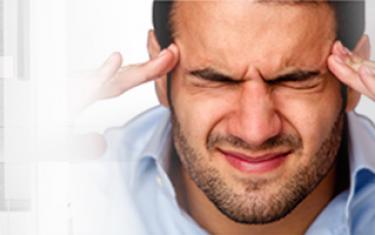Migraine Overview
Migraine is a type of headache. It comes with severe throbbing pain or a pulsing sensation, usually on just one side of the head and is often accompanied by nausea, vomiting and extreme sensitivity to light and sound. Migraine attacks can cause significant pain lasting for hours, sometimes even days. The pain can be so severe that it can adversely affect a person’s day-to-day functioning and quality of life. Usually, some warning symptoms, also known as aura, occur before the start of the actual pain attack. Auras can occur before or during the migraine attack. Typically, these include seeing flashes of light or blind spots or tingling on one side of the face or in either of the arms or legs. The symptoms vary from person to person, with different symptoms for each time. Migraine attacks may differ in length and frequency too, usually lasting from 4 to 72 hours. Most people are free from symptoms between the attacks.
There are different types of migraine. In 1988, the International Headache Society produced a classification system for migraines and headaches, which has been adopted by the World Health Organization. The two most common types of migraine are migraine with aura and migraine without aura. Medications can cure some migraines and make them less painful.
Types: There are several different types of migraines. The two most common types are: Migraine with aura and Migraine without aura. To know more about types, Read more.
Causes: It is observed that changes in brain chemicals, such as a decrease in levels of the brain chemical serotonin causes migraine symptoms. There are many possible migraine triggers including emotional, physical, dietary, environmental, and medicinal factors. To know more about causes, Read more.
Symptoms: Migraine can cause throbbing pain in one particular area that can vary in intensity. Nausea and sensitivity to light and sound are also common symptoms. To know more about symptoms, Read more.
Diagnosis: Our homeopaths will diagnose migraine on the basis of your medical history, migraine symptoms, your family history of migraine as well as a number of physical and other advanced examinations. To know more about diagnosis, Read more.
Treatment approach at Dr Batra’sTM:
Step 1: First Consultation – Our homeopaths will spend 30-45 minutes with you to understand the exact cause of migraine. We will take into account your medical history, genetics, lifestyle, work and home environment. Depending on all these factors, our homeopaths suggest customized homeopathic treatment for depression that will help you cope with it.
Step 2: Medical Diagnosis – Our homeopaths will diagnose migraine on the basis of your medical history, migraine symptoms, your family history of migraine as well as a number of physical and other advanced examinations.
Step 3: Personalized Treatment - Natural homeopathic medicines are suggested based on the diagnosis made and extent of the condition.
Step 4: Advice on lifestyle – Making small lifestyle changes can help reduce the number of times you get migraines. Our homeopaths will guide you on to how you can change your lifestyle to ensure a healthy mind and body. Read more.






